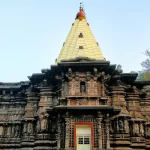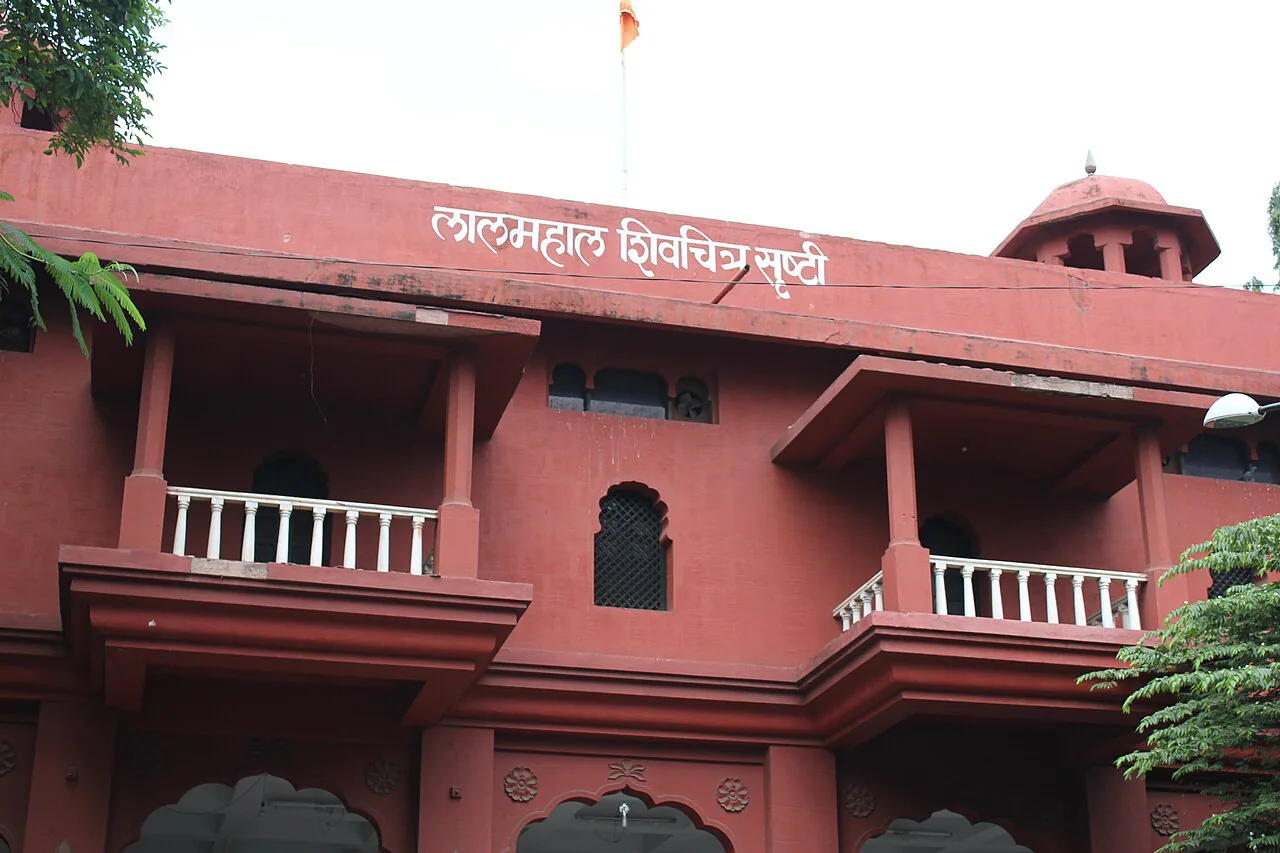🔴 Explore Lal Mahal: Pune’s Historical Gem
Nestled in the bustling heart of Pune, Lal Mahal stands as a vivid reminder of the Maratha Empire’s golden era. This iconic red-hued monument isn’t just a historical site—it’s a living chronicle of Chhatrapati Shivaji Maharaj’s early years, his daring escapades, and the cultural renaissance he ignited.
Whether you’re a history buff, an architecture enthusiast, or a curious traveler, Lal Mahal invites you to step back into the 17th century and relive the tales of bravery, strategy, and resilience that shaped Maharashtra. In this comprehensive guide, we’ll unpack everything you need to know about Lal Mahal: its riveting history, architectural nuances, travel logistics, and hidden gems nearby. Let’s dive in!
Ready to walk in the footsteps of a legend? Share this guide and start planning your trip to Lal Mahal now!

🟣 Detailed Introduction
➨ Lal Mahal: Where Pune’s Heartbeats Echo the Valour of Shivaji Maharaj
Pune, a city where modernity dances gracefully with history, is home to towering IT hubs, prestigious universities, and centuries-old monuments that whisper tales of bravery. Among these treasures, Lal Mahal stands apart—a crimson emblem of Maratha pride and the childhood abode of Chhatrapati Shivaji Maharaj, the visionary who defied empires. This iconic palace isn’t just a relic of the past; it’s a living chronicle of resistance, strategy, and cultural resurgence. Let’s embark on a journey through time, exploring how a 17th-century structure became the soul of Pune’s identity.
➨ A Phoenix Rising from Ruins
In 1630, Pune was a shadow of itself—ravaged by famine, political turmoil, and neglect. Enter Dadoji Kondadev, a visionary administrator entrusted by Shivaji’s father, Shahaji Bhosale, to revive the city. His masterstroke? Constructing Lal Mahal, a grand palace that would house young Shivaji and his mother, Jijabai. More than a residence, it became a crucible where Shivaji’s ideals of Swarajya (self-rule) were forged. The palace witnessed his first lessons in leadership, his marriage to Saibai, and his daring military beginnings.

➨ The Clash That Shaped History
Lal Mahal’s walls still echo with the clang of swords from one of India’s most audacious guerrilla strikes. In 1663, Mughal general Shaista Khan occupied Pune, even settling into Lal Mahal as a symbolic conquest. Chhatrapati Shivaji Maharaj, then a fledgling ruler, retaliated with a midnight raid. The legend goes that he sliced off Khan’s fingers as the general fled through a window—an act of defiance that humiliated the Mughals and cemented Shivaji’s reputation as a tactical genius. This event wasn’t just a battle; it was a statement that Maratha sovereignty couldn’t be quashed.
➨ From Glory to Rubble
By the late 1600s, Lal Mahal lay in ruins. Invaders plundered its stones, and locals repurposed its debris for new forts like Shaniwar Wada. For centuries, the palace existed only in folklore—until 1988, when the Pune Municipal Corporation resurrected it on a fraction of its original land. While the rebuilt structure lacks the grandeur of its predecessor, it serves as a poignant memorial. Today, visitors walk through halls adorned with oil paintings of Shivaji’s triumphs, a statue of Jijabai, and a fibre model of Raigad Fort, symbolising his indomitable spirit.
➨ Architecture: A Bridge Between Eras
The original Lal Mahal’s design remains shrouded in mystery, but historians speculate it blended Mughal and Maratha styles, with courtyards, intricate carvings, and red sandstone façades. The modern iteration, though simpler, honours this legacy. The vibrant red exterior evokes the passion of the Marathas, while the Jijamata Garden offers a tranquil escape. A controversial statue of Dadoji Kondadev once stood here, sparking debates over historical credit—a reminder that history is often as contested as it is celebrated.

➨ Cultural Heartbeat of Modern Pune
Lal Mahal isn’t frozen in time. It pulses with life during festivals like Ganesh Chaturthi, when devotees throng nearby temples, and students visit to study Shivaji’s governance models. Local historian Dr. Anjali Joshi remarks, “Lal Mahal isn’t just about Shivaji—it’s about Pune’s resilience. Every brick here tells a story of falling and rising again”. The palace also hosts workshops on Maratha art, making history accessible to Gen Z.
➨ Gateway to Pune’s Heritage Trail
A stone’s throw from Lal Mahal lies Shaniwar Wada, the Peshwa-era fort with its moonlit legends of betrayal. The Dagdusheth Halwai Temple, famed for its gold-plated Ganesha idol, and the Raja Dinkar Kelkar Museum, housing 20,000 artefacts, are must-visits. Stroll through Tulsi Baug market to savour Misal Pav or hunt for Paithani silk—Pune’s flavours and crafts are as rich as its history.
Also Read
Nashik, Maharashtra – Where Spirituality Meets Splendour
➨ Journeying to Lal Mahal
Nestled in Pune’s chaotic core, Lal Mahal is easily accessible. The city’s airport and railway station connect it to Mumbai (3 hours), Bengaluru (14 hours by road), and Delhi (2-hour flight). Monsoon (July–September) drapes the city in green, ideal for heritage walks, while winter (October–February) offers cool, sunny days. Auto-rickshaws zip through narrow lanes to the palace, where entry is free—democratic access to history, much like Shivaji’s vision.
➨ A Living Classroom
For students, Lal Mahal is a lesson in courage. For travellers, it’s a window into Maharashtra’s soul. As the sun sets, the palace’s red walls glow, a testament to a warrior-king who dared to dream. Whether you’re tracing Shivaji’s footsteps, marvelling at guerrilla warfare tactics, or simply soaking in Pune’s vibe, Lal Mahal promises a journey where history isn’t just seen—it’s felt.
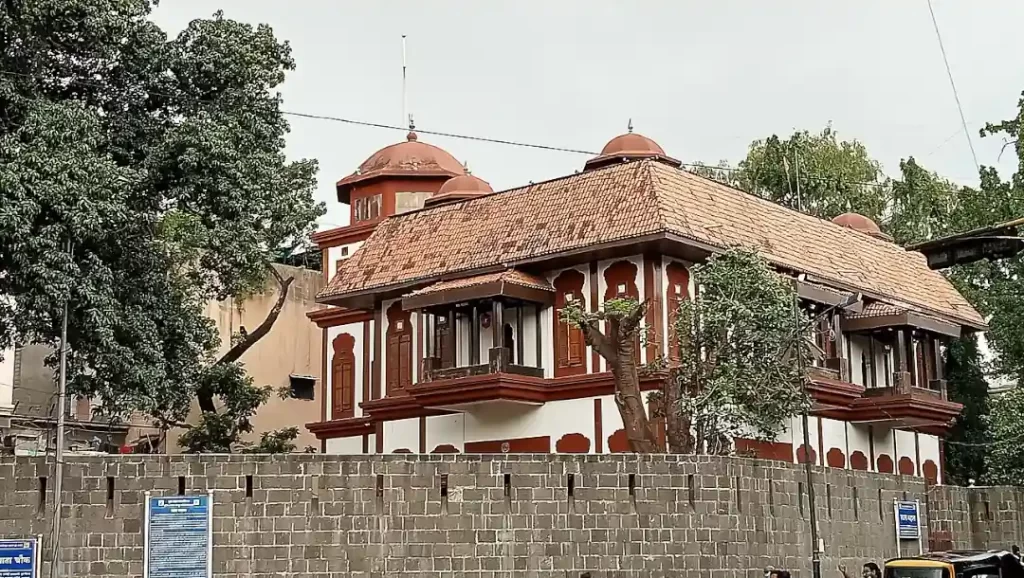
🟢 Section Breakdown:
➜ Introduction to Lal Mahal: A Legacy in Red
➜ History of Lal Mahal: From Glory to Ruins and Revival
➜ Architecture: Blending Maratha Grandeur with Modern Restoration
➜ How to Reach Lal Mahal: Distance from Major Cities
➜ Things to Do & Nearby Attractions
➜ Local Food & Markets: A Taste of Pune’s Culture
➜ Travel Tips: Weather, Best Time to Visit & Itineraries
➜ Cultural Insights: Demographics, Economy & Notable Figures
➜ FAQs: Your Questions Answered
➜ Conclusion & Sources
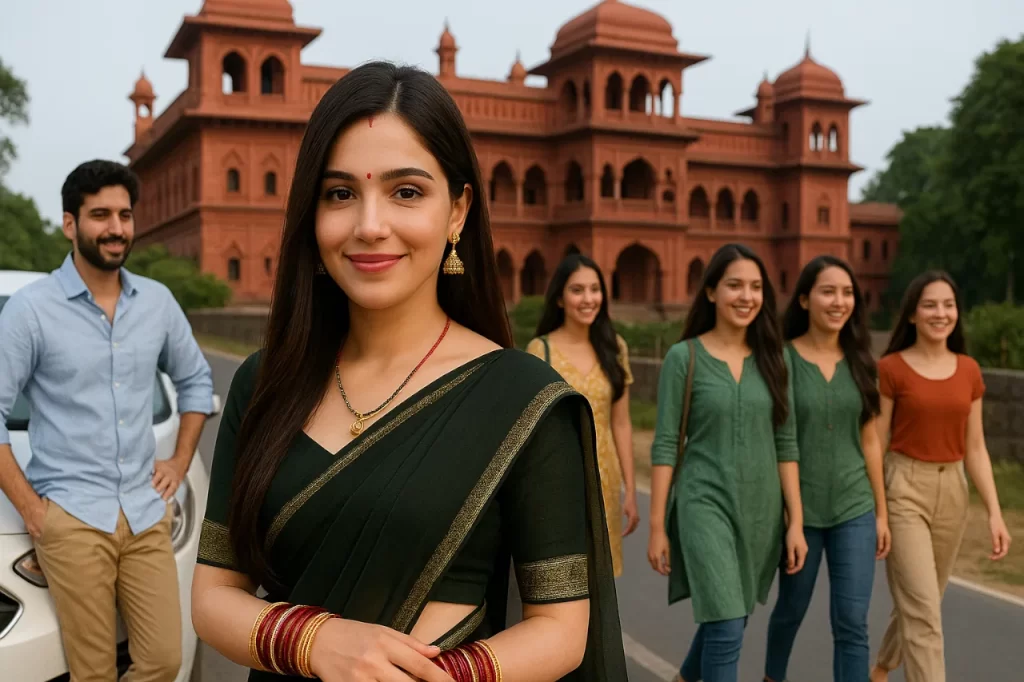
➤ Lal Mahal: A Legacy in Red
Pune, often dubbed the “Oxford of the East” for its academic prowess, is equally revered as the cultural heartbeat of Maharashtra. Among its forts, temples, and colonial-era buildings, Lal Mahal (Red Palace) shines brightest as the cradle of Maratha pride. Built in 1630 AD by Dadoji Kondadev, this scarlet monument was more than a royal residence—it was the training ground for a young Shivaji, who later defied the Mughals and forged an empire.
✦ Why Visit Lal Mahal?
❉ Relive Chhatrapati Shivaji Maharaj’s legendary clash with Mughal general Shaista Khan.
❉ Admire lifelike oil paintings and artefacts depicting Maratha history.
❉ Stroll through Jijamata Garden, a serene escape in the city’s chaos.
But Lal Mahal’s story isn’t just about the past. Today, it bridges history with modernity, offering visitors a chance to connect with Maharashtra’s roots. From its controversial statue removals to its role in local festivals, the palace remains a dynamic part of Pune’s identity.
➤ History of Lal Mahal: From Glory to Ruins and Revival
The Rise: Chhatrapati Shivaji Maharaj’s Playground (1630–1645)
In the early 17th century, Pune was a shadow of its former self, ravaged by famine and conflict. Shahaji Bhosale, Chhatrapati Shivaji Maharaj’s father, entrusted his advisor Dadoji Kondadev to rebuild the city. The result was Lal Mahal—a grand palace where Chhatrapati Shivaji Maharaj spent his formative years. It was here that he imbibed lessons in governance, warfare, and justice from his mother, Jijabai.
✦ Key Events:
❉ 1640: Shivaji’s marriage to Saibai was celebrated here.
❉ 1645: Shivaji left Lal Mahal after capturing Torna Fort, marking his first military triumph.
❉ 1663: The infamous Battle of Poona saw Shivaji attack Shaista Khan, who had occupied the palace. Legend says Shivaji sliced off the general’s fingers during his escape!
✦ Decline & Reconstruction
By the late 1600s, Lal Mahal lay in ruins after repeated invasions. Stones from its walls were even used to build Shaniwar Wada! The current structure, rebuilt in 1988 by the Pune Municipal Corporation, honours the original but lacks its grandeur. A statue of Dadoji Kondadev once stood here but was removed in 2010 after protests, sparking debates about historical representation.

➤ Architecture: Blending Maratha Grandeur with Modern Restoration
While the original Lal Mahal’s design remains a mystery, the reconstructed version blends traditional Maratha elements with modern simplicity.
✦ Highlights:
❉ Red Sandstone Facade: Symbolising valour and sacrifice.
❉ Jijabai Statue: A tribute to Chhatrapati Shivaji Maharaj’s influential mother.
❉ Raigad Fort Model: A fiber replica showcasing Chhatrapati Shivaji Maharaj’s capital.
❉ Oil Paintings: Depicting key moments like the coronation and guerrilla battles.
Local architect Rajesh Kulkarni shares, “The restoration focused on creating a space for education, not replication. We prioritised preserving stories over stone”.
➤ How to Reach Lal Mahal: Distance from Major Cities
✦ By Air: Pune Airport (7 km) connects to Delhi (2h), Mumbai (1h), and Bengaluru (1.5h).
✦ By Train: Pune Junction (3 km) is well-linked to Mumbai (3h), Hyderabad (10h), and Kolkata (28h).
✦ By Road:
❉ Mumbai to Pune: 150 km (3h via Expressway)
❉ Bengaluru to Pune: 840 km (14h)
❉ Delhi to Pune: 1,400 km (24h)
✦ Local Transport: Auto-rickshaws and app-based cabs cost ₹50–100 from the railway station.

➤ Things to Do & Nearby Attractions
❉ Shaniwar Wada: Explore the Peshwa-era fort (500 m away).
❉ Dagdusheth Halwai Temple: Seek blessings at this iconic Ganpati shrine (1 km).
❉ Raja Dinkar Kelkar Museum: Discover 20,000+ artefacts (2 km).
Monsoon Magic: Visit in July–September when Pune’s hills turn emerald green. Local guide Priya Deshmukh advises, “Pair Lal Mahal with a walk to Saras Baug during rains—it’s magical!”
➤ Local Food & Markets
✦ Must-Try Dishes:
❉ Misal Pav: Spicy curry with bread at Bedekar Misal.
❉ Bakarwadi: Sweet-savoury snack from Chitale Bandhu.
❉ Puran Poli: Sweet flatbread at Chitale Bandhu & Kayani Bakery.
✦ Markets:
❉ Tulsi Baug: Shop for traditional Paithani sarees and Kolhapuri chappals.
❉ FC Road: Grab street food and quirky souvenirs.
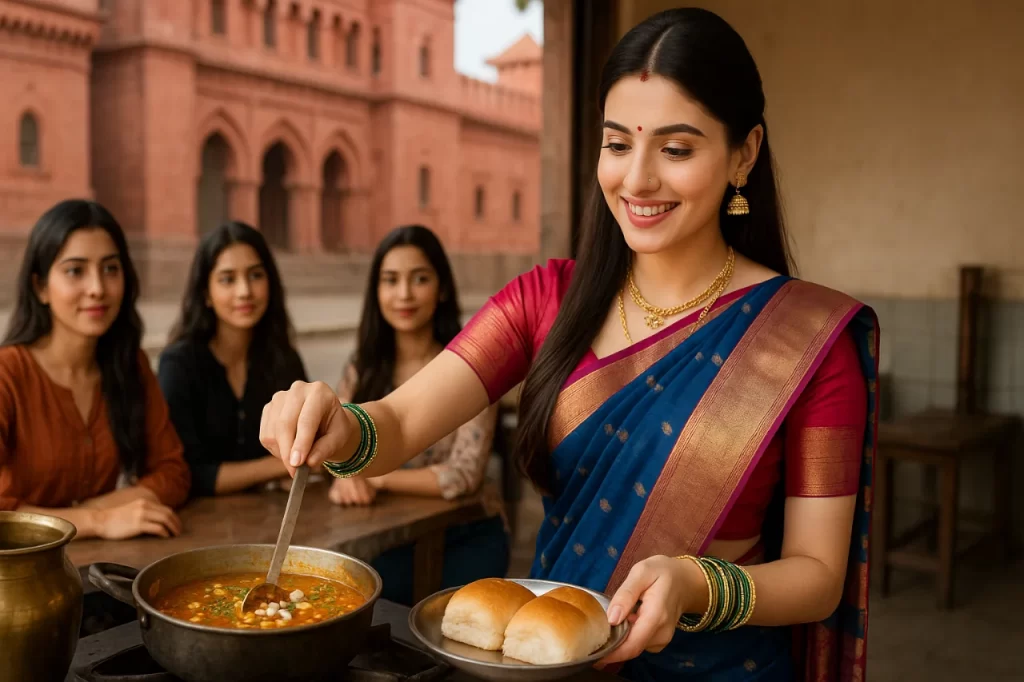
➤ Travel Tips & Weather
❉ Best Time to Visit: October–February (cool, 15°C – 28°C).
❉ Avoid Summers: April–June (35°C – 42°C).
❉ Festivals: Ganesh Chaturthi (August–September) lights up the city!
➤ Cultural Insights
✦ Demographics:
❉ Population: 7.2 million (Pune district).
❉ Languages: Marathi (74%), Hindi, English.
❉ Economy: Education, IT, and manufacturing.
✦ Notable Figures:
❉ Shivaji Maharaj: Founder of the Maratha Empire.
❉ Savitribai Phule: Pioneering educator and social reformer.

➤ FAQs
Is photography allowed?
Yes, except in the art gallery.
Entry fee?
Free! Open 9 AM – 6 PM daily.
➤ Conclusion & Sources
Lal Mahal isn’t just a monument—it’s Maharashtra’s pride etched in red. Whether you’re tracing Shivaji’s footsteps or savouring Pune’s vibrant culture, this landmark promises an unforgettable journey.
➤ Sources:
➸ Incredible India – Lal Mahal
➸ Maharashtra Tourism
➤ Image Credit
➸ Wikimedia Commons – Lal Mahal, Pune
➸ Wikimedia Commons – Laal Mahal, Pune
➸ Wikimedia Commons – Lal mahal 4
➸ Wikimedia Commons – Lal Mahal front view
For more information, you can visit our website: ExploreXP
📢 Loved this guide? Share it with fellow travellers and tag #LalMahalAdventures! 🌍✨
Latest Posts
- Dapoli – Ratnagiri District, Maharashtra: Where Coastal Charm Meets Colonial Legacy
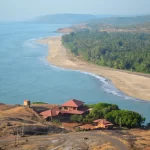
- Exploring Beed, Maharashtra – History, Culture & Travel Guide
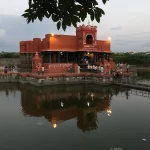
- Chandrapur Fort – Unraveling Maharashtra’s Timeless Legacy

- Explore Dharangaon, Maharashtra: Where History Meets Heritage in the Heart of Maharashtra

- Lal Mahal: Pune’s Timeless Tribute to Chhatrapati Shivaji Maharaj’s Legacy
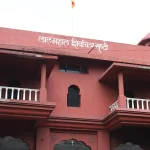
- Kolhapur, Maharashtra – Where History Meets Spice
